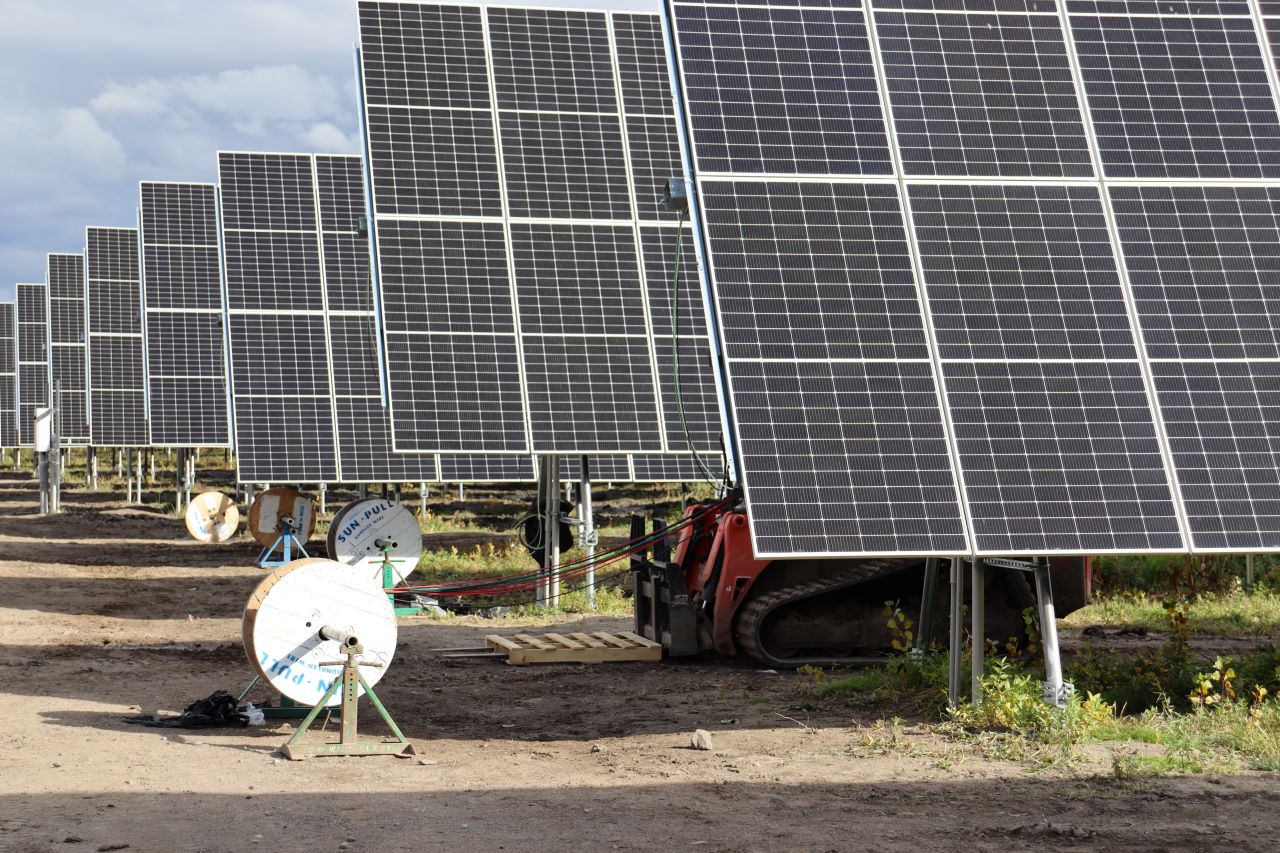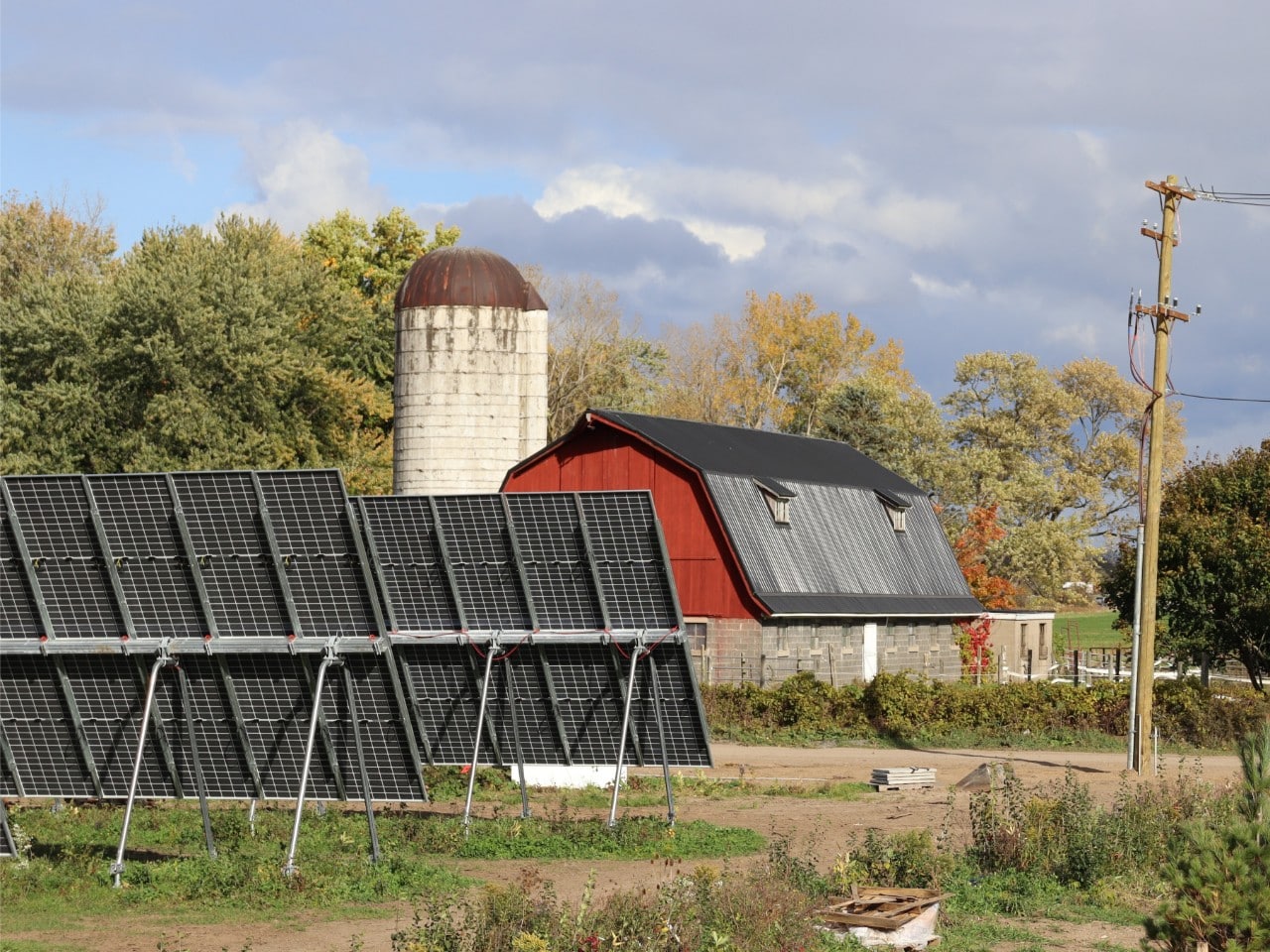Solar development is thriving across the United States, but why?
While we can suggest growth is directly tied to climate change goals, nuance is missing. Climate change drives solar adoption, but maturing technology and lower costs influence it, too.
Lower Costs, More Adoption
New technology is always expensive when it first hits the market.
Like electric vehicles, computers, and MP3 players, solar panels cost less than what they did when they were first sold. According to the National Renewable Energy Laboratory (NREL), the cost of residential, rooftop commercial, and utility-scale solar fell 64%, 69%, and 82%, respectively, from 2010 to 2020.
In 2022, a tariff moratorium benefited the solar industry by allowing companies to import low-cost solar panels from Asia. Though the tariff is ending, it has given domestic manufacturers time to increase production. Domestic panels may be more expensive but cost less to ship and have a shorter supply chain.
Soft costs are also improving, though more slowly than hard costs. Unfortunately, there isn’t one universal policy, leaving communities and states to create rules. This results in processes that slow down solar projects and potentially increase costs.
Despite political and technical hiccups, solar installations are up. Solar Energy Industries Association (SEIA) data suggests solar accounted for 75% of new electricity capacity added in Q1 2024. The organization also mentioned utility solar projects were doing well, setting quarterly records in Q1 2024.
But amongst all the excitement, a storm cloud could derail momentum.
Tackling Climate Change with Solar
Generating electricity isn’t always clean or cost-effective, but it’s part of our daily lives.
Unlike fossil fuels, solar energy and other renewables are cheaper, cleaner, and infinitely available. As a result, solar farms are playing a critical role in upgrading our clean energy portfolio.
According to the U.S. Energy Information Administration (EIA), the country added 15.8 GW of solar power from January to September 2023 – up 30% year-over-year. While it’s great news for the industry, the country, and the environment, the solar boom is facing headwinds.
Wood Mackenzie, a data and analytics company, believes inflation could temper solar energy’s sunny outlook. When inflation rises beyond the normal range, it sends ripples throughout the economy. With inflation spiking in recent years, Wood Mackenzie fears the renewable market could be impacted more than other industries.
The group says photovoltaic (PV) installations are expensive to establish, resulting in high investments and low returns. However, solar has long been an attractive choice because of its levelized cost of electricity (LCOE), a metric comparing different types of energy to one another.
Solar has a much lower LCOE than fossil fuels like natural gas, but its advantage shrinks as inflation rises.
Inflation Looms Large
Inflation-wise, life was pretty good for many industries emerging from the Great Recession.
Rates were low and steady, allowing businesses and the economy to flourish. But after more than a decade of stability, COVID-19 ruined the party.
As the world reopened and life returned to normal, inflation boomed. By the middle of 2021, the 12-month inflation rate had risen to more than 5%. A year later, we saw inflation rates around 9%. The rate has cooled but still sits far above where it was only a few short years ago.
Some inflation is good because it encourages businesses to invest, but excessive inflation does the opposite. Over time, higher inflation means less profit. High inflation makes operating costlier, ultimately hurting industry growth, especially in emerging markets. It also makes it harder to plan for future projects because money is “more expensive.”
How Higher Inflation Affects Solar EPCs
The simple response to the impact of inflation on the industry is to say, “Everything is more expensive.”
However, several areas of solar development may feel the brunt more than others.
Projects Are More Expensive
When interest rates increase, so do financing costs.
In straightforward terms, financing costs are tied to borrowing money for funding projects. These costs include loans, interest, and other fees. As these costs increase, it’s harder to afford more or larger projects.
For solar sites, upfront costs make up the majority of expenses. Engineering, Procurement, and Construction (EPC) companies must purchase racking, solar panels, wiring, and connectors while juggling permits, taxes, and land costs. Once the project is complete, costs fall dramatically as maintenance and operation costs are much lower.
Of course, the upfront costs bring new solar projects online. When rates are high, companies are less willing to jump into new projects. Over time, the number of delays increases alongside cancellations.
A Ripple Effect
Delayed or canceled projects have impacts far beyond one job.
Higher interest rates may cause delays and cancellations, potentially impacting solar development in certain areas. With fewer projects, there aren’t as many jobs for installers, electricians, and other professionals.
On the other hand, solar is still a growing industry with a shortage of qualified professionals. More delays may lead to fewer opportunities in the short term and more trouble finding labor if demand picks up.
Additionally, as we saw during COVID-19, supply and demand metrics can throw the entire supply chain off. When interest rates are high and projects slow down, companies are less likely to hang onto inventory because it’s more expensive. When materials sit on shelves, it creates sunk costs because inventory isn’t moving.
Supply chains could suffer, especially when the solar panel moratorium ends. For two years, solar installers have had access to low-cost panels from overseas, specifically East Asia. The moratorium was supposed to help increase domestic manufacturing, but the domestic supply still poses concerns.
In this case, companies may have to pay more for materials while dealing with supply chain hiccups.
Beating Back Inflation
Inflation may be high, but there’s hope for companies, installers, and the industry.
The Federal Reserve will likely reduce interest rates this year, but it’s not guaranteed. With that said, solar installers have options to reduce costs and keep projects moving.
Take Advantage of the Inflation Reduction Act (IRA)
The IRA has plenty of initiatives and incentives to encourage solar development.
Some of the most common are ITC and PTC credits that kick in upfront or over time. For example, an ITC credit does not change based on variables, but a PTC credit could change based on project costs, other available credits, and even the environment the array is in.
Expanding on the IRA’s benefits, the law also includes other incentives and programs for underserved regions. Their goal is to encourage the development of low-cost, reliable energy projects in rural, low-income, and tribal areas.
Simplify Permitting
One problem associated with solar development is navigating a maze of permitting red tape.
Though the process has improved, states and communities may have vastly different procedures. Solar EPCs should look for communities, regions, and states welcoming solar. These areas are more likely to have simpler permitting processes, which can get projects off the ground faster.
Several organizations and agencies have information available to streamline the permitting process, including:
- Database of State Incentives for Renewables & Efficiency (DSIRE): https://www.dsireusa.org/
- National Renewable Energy Laboratory (NREL): https://www.nrel.gov/
- Solar Energy Industries Association (SEIA): https://www.seia.org/
Improve Productivity
Besides materials, labor is a massive cost center – especially on larger projects.
Keeping projects on track often means using parts that reduce in-field work as much as possible. Pre-made components limit mistakes in the field because all parts have been tested before leaving the factory. They also allow crews to get on and off the site faster, letting them move on to the next project.
For example, bundled wire and pre-made PV connectors cost slightly more than single reels and field-made connectors. The higher cost is more than returned in savings, as workers can install PV wire up to 80% faster. Over several projects, the labor and time savings more than cover the extra cost with fewer workers on site.
Light at the End of the Tunnel
Inflation remains high but is slowly falling.
As with anything in life, what goes up must come down. Construction input prices have slipped recently, leading some experts to take it as a sign of easing inflation. The hope is with softening prices, the Federal Reserve may cut interest rates in the coming months.
Though construction is tangent to solar farm installation, it offers the economy hope. Solar EPCs are in a unique situation right now. Although costs are increasing in the short term, so is the demand for renewable energy.
We thought the market might slow down, but it has stayed strong. This has encouraged installers and manufacturers to continue pushing for long-term projects and development. Meanwhile, the industry is navigating a labor shortage, opening the door for people to access high-paying solar jobs.
The industry is stronger than ever, prompting companies, utilities, and communities to invest in solar. These installations provide clean power to the electrical grid and help reduce greenhouse gas emissions caused by fossil fuels.
EPCs still have options to save money despite the economic environment. It only requires forward-thinking site placement, permitting strategies, material sourcing, and labor decisions.



